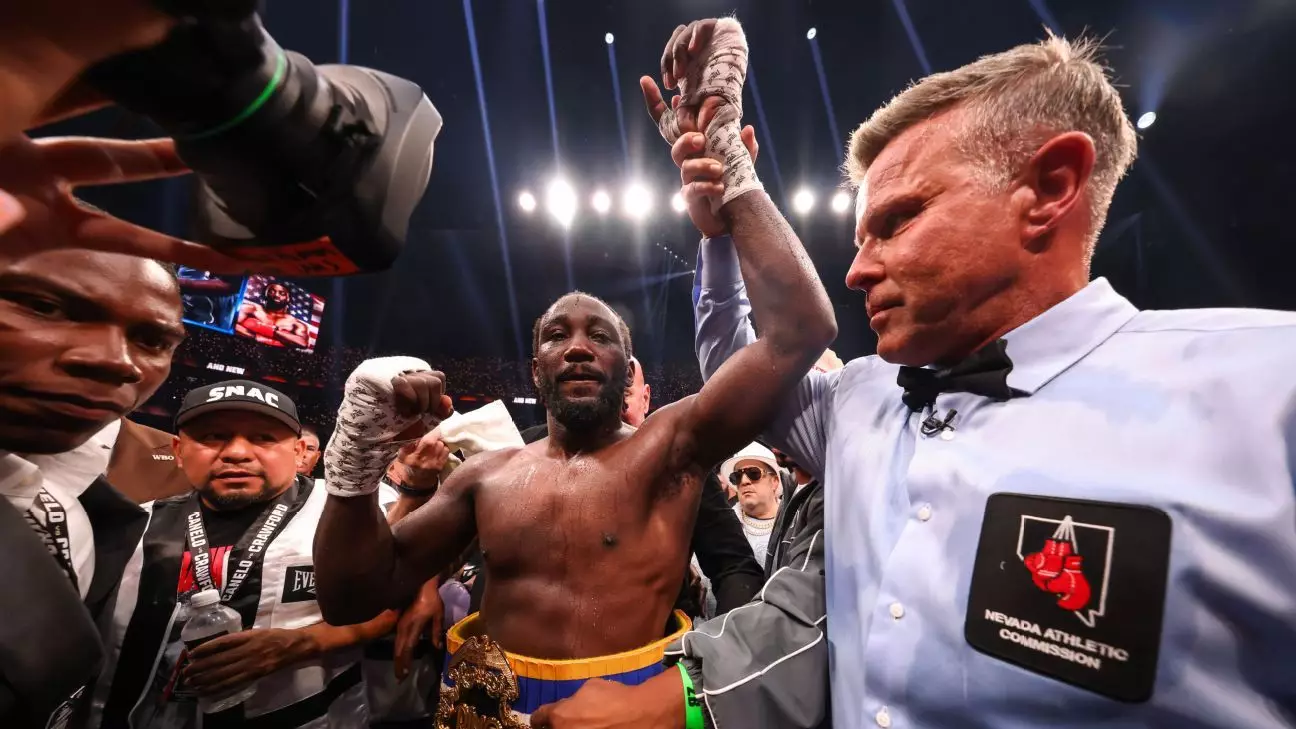In the dynamic landscape of professional combat sports, rare moments emerge that challenge the traditional boundaries between boxing and MMA. The recent exchanges between Terence Crawford, an undisputed boxing champion, and Ilia Topuria, a rising UFC star, exemplify this phenomenon. While Crawford’s recent triumphant victory over Canelo Alvarez cemented his legacy in boxing, it has inadvertently ignited a curious and contentious debate: Can an MMA fighter truly transition into boxing and pose a credible threat to a seasoned champion? This question sparks not just curiosity but also underlying tensions rooted in sport-specific skill sets and credibility.
What makes this rivalry noteworthy is the divergence in motivation and perception. Topuria, a talented and ambitious fighter, sees an opportunity for a crossover fight to elevate his profile and challenge the boxing status quo. Conversely, Crawford dismisses this challenge as superficial, driven more by social media clout than genuine sporting intent. This clash of personalities and ambitions illuminates the broader question: Should cross-discipline fights be taken seriously, or are they merely spectacle-driven events designed for profit? The underlying issue revolves around legitimacy—what constitutes a fair and competitive matchup between fighters from different worlds?
While some may dismiss Topuria’s bold pronouncements as mere bravado, the underlying fire hints at the evolving nature of combat sports marketing. Fighters now leverage social media not just to promote their fights but to establish new rivalries, whether rooted in sport or spectacle. This blurring of boundaries hints at future possibilities, yet it also raises concerns about undermining the specialized skills that define each discipline. Whether fans or purists, we must question if these interactions serve the sport’s integrity or dilute its rigor for the sake of entertainment.
The Cultural and Personal Dynamics in Play
The confrontation extends beyond athletic competition and delves into cultural iconography and personal brand-building. Topuria’s use of “Canción del Mariachi” as his entrance theme, reminiscent of the film “Desperado,” became a focal point of tension. His choice reflected a desire to project a specific persona—one steeped in Mexican cultural identity and swagger. Crawford’s indifference, coupled with his dismissal of Topuria’s theatrics, reveals a classic clash between grit and showmanship. However, Topuria’s response—calling out Crawford on social media and provocatively offering to teach him how to dance—escalates the rivalry beyond sport into a cultural exchange of bravado.
This interaction underscores the importance of persona and image in combat sports. Topuria’s willingness to incorporate cultural symbolism and challenge Crawford in a playful yet pointed manner demonstrates how fighters leverage personality to connect with audiences. Crawford’s refractive stance, dismissing the MMA champion as “clout-chasing,” reflects a traditional view—preferring respect and legitimacy over spectacle. It’s a reflection of the old-to-new guard clash within combat sports, where seasoned champions often feel threatened by the rising influence of crossover personalities eager to capitalize on the shifting media landscape.
But beneath the surface, this friction hints at deeper issues: credibility, respect, and the fight for relevance. Topuria’s daring words serve as a rallying cry for MMA fans hungry for crossover opportunities, while Crawford’s rejection underscores the investment many boxers continue to make in preserving the sport’s integrity. Both perspectives reveal contrasting philosophies on how combat sports should evolve—whether through respecting boundaries or embracing the chaos of a new age.
The Future of Cross-Discipline Combat Sports
The ongoing debate highlights a broader trend: the increasing convergence of combat sports. Events like Mayweather vs. McGregor blurred traditional lines and generated enormous revenue—an encouraging sign for fighters seeking new avenues of income. However, Crawford’s skepticism about the actual competitive value of Topuria’s challenge points to a crucial question: Are these crossover fights ultimately beneficial, or do they threaten to undermine the sport’s competitive credibility?
There’s a palpable tension between entertainment and athletic integrity. While crossover bouts can serve as lucrative opportunities, they often risk being perceived as spectacle rather than sport. Crawford rightly questions the motivation—what’s the true incentive for him to step into the ring with a fighter whose primary experience lies outside boxing? The disparity in skill sets, training methodologies, and disciplines makes such fights inherently complex. Yet, if managed properly, they could serve as platforms for mutual growth, exposing fans to diverse styles.
Moving forward, the challenge lies in establishing fair, respected cross-discipline competitions that prioritize athlete safety and competitive fairness. Whether mixed rules, hybrid tournaments, or highly selective bouts, the industry must strike a balance. For now, tension remains as fighters like Crawford resist the allure of quick fame over genuine competition. But the sport’s evolution is inevitable; the question is whether it will be driven by respect for tradition or by the lure of novelty and profit.
In the end, the dialogue between Crawford and Topuria is more than mere trash talk; it encapsulates the ongoing transformation of combat sports. It is a testament to how athletes and fans alike are navigating the new frontier—where boundaries are tested, legends are challenged, and the future of fighting remains as unpredictable as ever.

